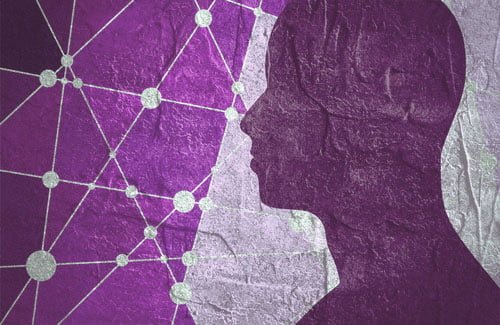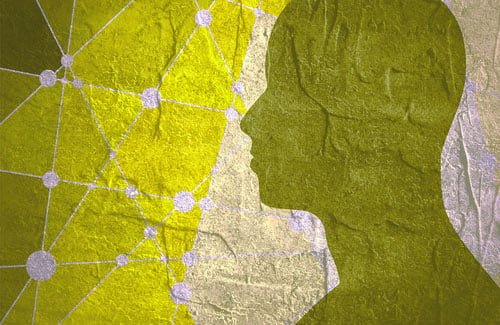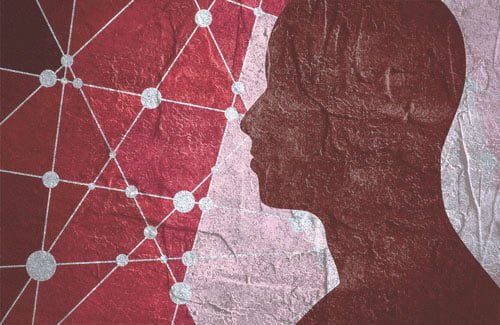Symptoms and Screening Tools: Mental Health
Click the block to learn about the topic:

Anxiety

Depression

PTSD / Trauma
What Are Anxiety Disorders?
An anxiety disorder involves persistent and excessive worry and/or fear about everyday situations. While the feeling of anxiety is a fairly common occurrence, having an anxiety disorder interferes with an individual’s ability to function in everyday activities. There are various types of anxiety disorders, which include generalized anxiety disorder, panic disorder, social anxiety disorder, obsessive-compulsive disorder, and separation anxiety disorder.
Symptoms of Anxiety:
- Feelings of nervousness or being “on edge”
- Racing thoughts or mind going blank
- Decreased ability to concentrate
- Unrealistic or excessive worry about past and/or future events
- Rapid heartbeat or hyperventilation
- Indecisiveness
- Restlessness
- Disturbances in sleeping patterns (sleeping too much or too little)
- Avoidance of certain situations
- Gastrointestinal issues such as stomach pain, nausea, vomiting, or diarrhea
- Having a sense of impending danger
Statistics on Anxiety:
- Anxiety disorders are the most common mental health condition in the U.S.
- Approximately 18% of adults experience an anxiety disorder in any given year
- The median age of onset for an anxiety disorder is 11 years old
- Anxiety disorders are more common in females
- An estimated 31.1% of U.S. adults experience any anxiety disorder at some time in their lives
What Is a Depressive Disorder?
While almost everyone experiences sadness, most are able to recover from a low mood fairly easily and resume normal activities without treatment. However, an individual with a depressive disorder has persistent feelings of sadness, worthlessness and a decreased desire to engage in activities that were formerly pleasurable. A depressive disorder affects an individual’s ability to carry out normal daily activities, work, or engage in satisfying relationships.
Symptoms of Depression:
- Persistent feelings of sadness, hopelessness or emptiness
- Loss of enjoyment in activities that used to be pleasurable
- Lack of energy
- Changes in sleep, such as sleeping too much or sleeping too little
- Having thoughts of suicide or wishing one were dead
- Trouble concentrating or making decisions
- Crying spells
- Isolating from others
- Chronic fatigue
- Headaches
- Irritability
- Frequent self-blame
- Feeling anxious
Statistics on Depression:
- Major depressive disorder affects 6.8% of adults in any given year.
- The median age of onset of depression is 32 years old. Depression may affect anyone from pre-school youth to older adults.
- Approximately 3.1 million adolescents had at least one major depressive episode in 2016. However, 60% did not receive treatment.
What Is PTSD and Trauma?
Trauma is defined as an emotional response to a particular event or experience that is distressing or disturbing to an individual. Traumatic experiences can range from being involved in an accident or losing a loved one to more large-scale events such as natural disasters or war.
Post-traumatic stress disorder (“PTSD”) can occur after someone experiences a traumatic event, and consists of upsetting memories or flashbacks that involve the event.
Symptoms of PTSD / Trauma:
- Recurrent dreams of a traumatic event
- Flashbacks
- Reduced interest in formerly pleasurable activities
- Being easily startled
- Feeling numb or disconnected
- Sleep disturbances (e.g. insomnia or sleeping too often)
- Difficulty concentrating
- Anxiety
- Confusion
- Bad dreams
- Avoidance of thoughts or feelings related to a traumatic event
- Angry outbursts
- Isolation from others
- Difficulty recalling details of a traumatic event
- Feeling guilty
- Negative thoughts of oneself or of the world
Statistics on PTSD / Trauma:
- About 8 million adults have PTSD during a given year.
- About 10 of every 100 women (or 10%) develop PTSD sometime in their lives compared with about 4 of every 100 men (or 4%).
- An estimated 5% of adolescents have PTSD, and an estimated 1.5% have severe impairment.

Eating Disorders

Psychosis

Bipolar Disorder
What Are Eating Disorders?
An eating disorder involves a heavy fixation on appearing overweight or appealing unattractive. An eating disorder typically occurs when an individual has distortions in their thought process regarding body image, which can lead to behaviors that interfere with that person’s ability to function. Two of the most common eating disorders are 1) Anorexia Nervosa, which is characterized by the utilization of extreme strategies to lose weight such as dieting, fasting, over exercising or using laxatives, and 2) Bulimia Nervosa, which is characterized by frequent episodes of eating large quantities of food followed by a behavior to compensate for that binge, such as purging, fasting, or excessive exercising.
Symptoms of Eating Disorders:
- Excessive weight loss or fluctuations in weight
- Fasting
- Counting calories
- Binge eating
- Vomiting or laxative use
- Excessive exercise patterns
- Fainting
- Extreme dissatisfaction with body
- Fear of gaining weight
- Brittle hair and nails
- Low blood pressure
- Feeling cold frequently
- Worn tooth enamel
Statistics on Eating Disorders:
- Eating disorders affect up to 30 million people in the U.S. annually.
- Eating disorders are 2-3 times more common in females than in males.
- Eating disorders have the highest mortality rate of any mental illness.
- More than half (56.2%) of respondents with anorexia nervosa, 94.5% with bulimia nervosa, and 78.9% with binge eating disorder met criteria for at least one other of the core DSM-IV disorders.
What Is Psychosis?
Psychosis is a term used to describe a condition in which an individual has lost some contact with reality which results in impairments in thinking, behavior and emotion. Psychosis can drastically affect someone’s ability to carry out normal daily functions and engage in satisfying relationships. Some of the more common types of mental disorders that can include psychosis are schizophrenia, bipolar disorder, schizoaffective disorder, or psychotic depression.
Symptoms of Psychosis:
- Hallucinations
- Delusions
- Depression
- Anxiety
- Irritability
- Flat affect
- Reduced energy or motivation to carry out daily activities
- Difficulty concentrating
- Expressing odd ideas
- Impaired ability to speak or articulate thoughts
- Decreased ability to understand information and make decisions
- Difficulty with memory
- Change in personal hygiene or appearance
Statistics on Psychosis / Schizophrenia:
- Estimates of the prevalence of schizophrenia and related psychotic disorders in the U.S. range between 0.25% and 0.64%.
- Schizophrenia is one of the top 15 leading causes of disability worldwide.
- The estimated average potential life lost for individuals with schizophrenia in the U.S. is 28.5 years.
What Is Bipolar Disorder?
Bipolar disorder is a condition that affects an individual’s mood, and is often characterized by shifts in mood, energy, and the ability to carry out normal daily activities. The shifts in mood can range from periods of immense depression to periods of mania, with periods of normal mood in between those fluctuations.
Symptoms of Bipolar Disorder:
- Extreme mood swings
- Depression or feelings of sadness or hopelessness
- Mania
- Sleep disturbances (sleeping too much or too little)
- Rapid thoughts or talking too fast
- Lack of insight
- Irritability
- Delusions
- Risky behaviors
- Suicidal thoughts or thinking about death
- Feeling empty or isolated
Statistics on Bipolar Disorder:
- 50% of individuals with bipolar disorder have their first episode by age 25.
- Approximately 2.8% of the population is affected by bipolar disorder in any given year.
- An estimated 82.9% of people with bipolar disorder had serious impairment, the highest percentage of serious impairment among all mood disorders.
